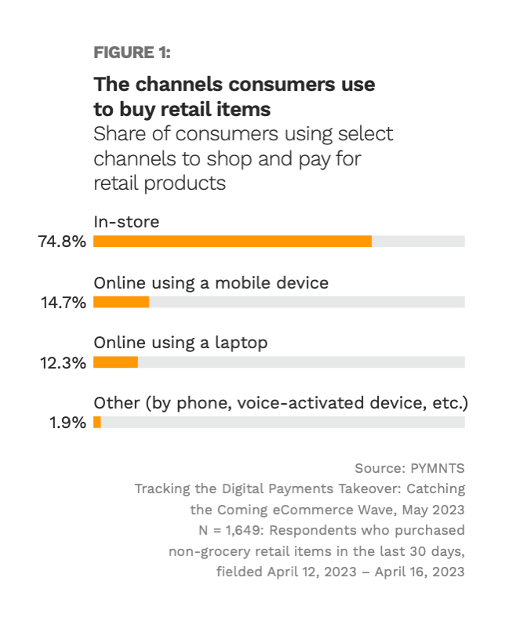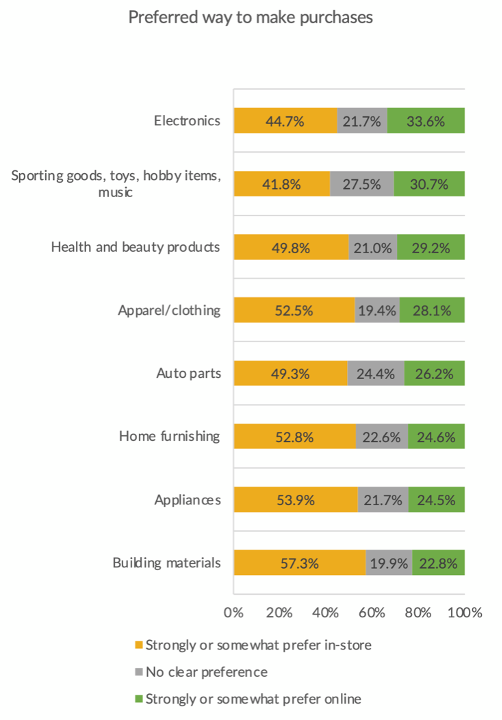Clothing, Furnishings and Appliances Lead In-Store Purchases

The rise of eCommerce and the integration of online and offline shopping have shaped the way consumers are making their purchases.
Despite a shift toward online sales, however, consumers still prefer to make certain purchases in store, PYMNTS Intelligence has found. These include items such as apparel, home furnishings and appliances.
“Tracking the Digital Payments Takeover: Catching the Coming eCommerce Wave,” a PYMNTS and Amazon Web Services collaboration, examines how consumers expect their use of digital shopping to increase in the future. According to the study, U.S. consumers are overwhelmingly more likely to shop for retail products in-store than online, with 75% of consumers shopping and paying for retail products in brick-and-mortar stores.

Consumers are most likely to buy their appliances in store, as opposed to other categories of merchandise, with 54% of respondents preferring to purchase these items in person. This is followed closely by home furnishings and apparel and clothing, preferred by 53% in both cases.
Delivery fees, delivery delays and concerns about increased spending are the top reasons consumers cite for not buying these items online. These concerns are especially notable among Generation X, baby boomers and seniors.

Source: PYMNTS Tracking the Digital Payments Takeover: Catching the Coming eCommerce Wave, May 2023 N = 1,649: Respondents who purchased non-grocery retail items in the last 30 days, fielded April 12, 2023 – April 16, 2023
As the holiday shopping season approaches, retailers are gearing up for a competitive sales period amid challenges such as declining purchasing power and intense promotional activity. One notable trend for this holiday shopping season will be the role of younger consumers in driving sales growth. Consulting firm BCG anticipates that Generation Z and millennials, who have experienced higher wage gains, are likelier to spend more on holiday shopping. Despite broader financial sentiments showing a tendency towards spending restraint, BCG suggested that younger consumers view holiday spending as an outlet for their financial anxieties.
Overall, consumers are expected to spend more this year on toys, electronics and winter essentials, per Shopify. Spending plans differ by generation, however: Gen Z and millennial consumers plan to spend more on apparel, pets, beauty, intimates and home goods, while Gen X and baby boomers expect to cut back on spending across many discretionary categories, according to BCG.
Although physical stores are currently key for certain retail categories, that status quo may be threatened soon. The survey found that the share of retail spending that occurs in-store could drop significantly next year, as nearly one-third of consumers expect to shop more on digital channels.
In addition to click-and-collect services and integrating loyalty programs across channels, retailers can explore new ways to enhance the omnichannel experience for their clients and increase engagement. For example, implementing augmented reality technology in physical stores allows customers to virtually try on clothes or visualize furniture in their homes before making a purchase. By tapping into this technology, merchants can offer consumers the best of both worlds.
